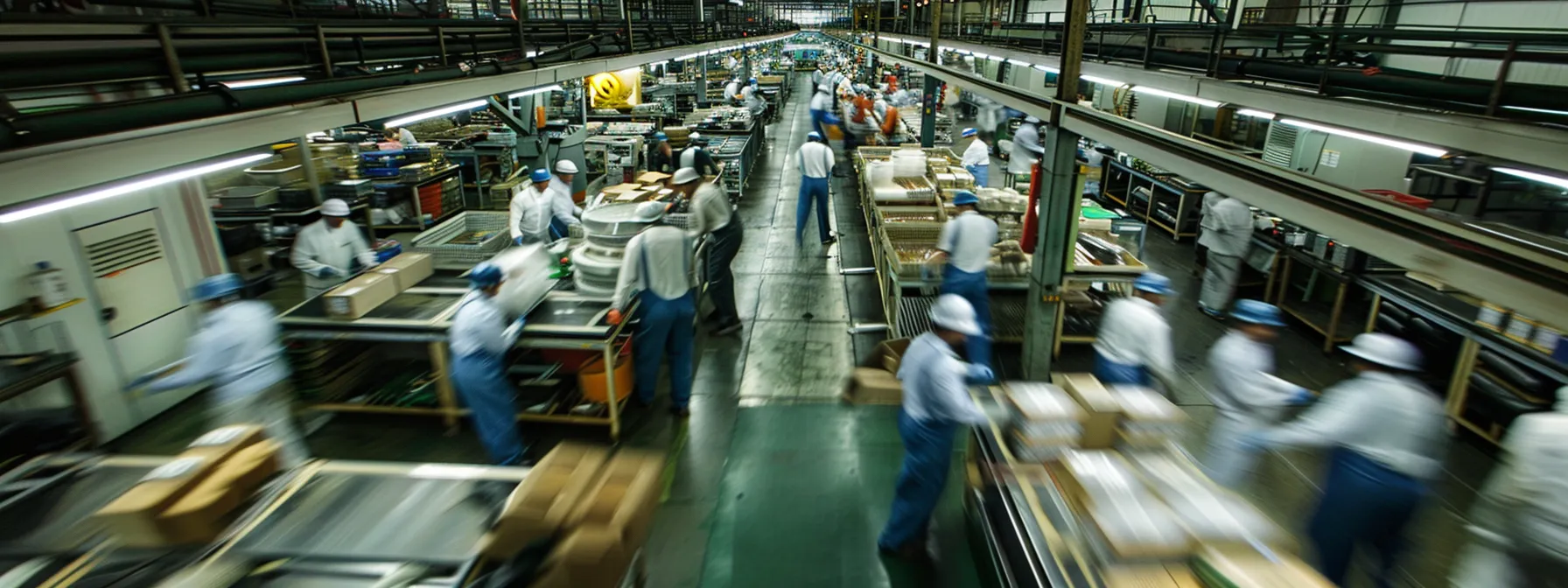How to Measure and Improve Capacity Utilization in Manufacturing Industries
Capacity utilization is a crucial performance metric in manufacturing industries, representing the extent to which a company uses its installed productive capacity. It serves as an indicator of operational efficiency and a gauge for potential expansion. Understanding and improving capacity utilization can lead to significant cost savings, enhance productivity, and streamline production processes. Manufacturers who master this concept can gain a competitive edge in their respective markets. Keep reading to delve into effective ways of measuring and amplifying capacity utilization in manufacturing.
Understanding Capacity Utilization in Manufacturing Industries

Capacity utilization measures how effectively a manufacturer uses its resources, comparing actual output to potential output. High capacity utilization indicates efficient use of equipment and labor, often leading to higher profitability. It’s not just about volume, but also the quality and speed of production, offering insights into potential inefficiencies and the balance between supply and demand.
Maintaining optimal capacity utilization can be challenging due to market fluctuations, maintenance issues, and unpredictable demand. Regular monitoring is essential, as both overuse and underperformance can negatively impact costs. Understanding what is capacity utilization helps manufacturers manage resources strategically to avoid financial strain.
Essential Metrics for Measuring Capacity Utilization
Capacity utilization is a crucial aspect of a facility’s production capacity. It is measured using metrics such as Capacity Utilization Rate (CUR), Throughput, and Overall Equipment Effectiveness (OEE). CUR provides a snapshot of the facility’s production potential, while Throughput measures the rate of goods production and passing through the system.
Throughput helps identify bottlenecks and understands how different stages contribute to overall capacity utilization. OEE, or Overall Equipment Effectiveness, considers availability, performance, and quality to provide a comprehensive picture of production efficiency. Regular monitoring of these metrics allows manufacturing companies to make informed decisions to optimize production processes and improve capacity utilization.
Tools and Techniques for Accurate Capacity Measurement
Manufacturers use various tools and techniques for precise capacity measurement, including advanced software solutions like ERP and MES, which provide real-time visibility into manufacturing operations. Traditional methods like time studies and work sampling also offer valuable insights.
Lean manufacturing techniques like value stream mapping and root cause analysis help identify waste within production processes and provide a clear view of materials and resource flow. Simulations and modeling aid in accurate forecasting and planning, allowing manufacturers to predict the effects of changes in demand, process improvements, and resource allocation on capacity utilization. Overall, these methods help manufacturers improve their capacity utilization and overall efficiency.
Strategies to Enhance Capacity Utilization

Manufacturers can improve their capacity utilization by optimizing their production schedule, investing in equipment maintenance and upgrades, and enhancing skills and cross-training employees. Optimizing the production schedule aligns with demand patterns, minimizing idle time and overproduction. Lean production techniques reduce waste and streamline processes. Preventative maintenance schedules minimize downtime while investing in newer technology increases output capacities.
Automation is particularly impactful, allowing for consistent, around-the-clock production without manual labor constraints. Cross-training employees allows for more versatility in managing shifts in production demand, ensuring a higher and more flexible level of capacity utilization. Outsourcing can also be a strategic option, meeting increased production needs during peak demand without incurring costs or avoiding underutilized internal resources during lower demand.
Analyzing the Impact of Improved Capacity Utilization on Business Performance
Capacity utilization significantly impacts business performance, resulting in improved efficiency, reduced costs per unit, and higher profit margins. This indicates effective asset management, boosting investor confidence and market valuation. Strategically, improved capacity utilization allows businesses to innovate and respond quickly to market changes, providing a competitive edge. It also boosts employee morale and job satisfaction, driving continuous improvement and operational excellence.
Optimized capacity utilization also benefits the environment, as it reduces waste and carbon footprint, aligning operational improvements with sustainability goals. This practice appeals to eco-conscious customers and comply with stringent regulations in today’s market.
Overall, mastering the measurement and improvement of capacity utilization is indispensable for manufacturing industries aiming to thrive in a competitive landscape. It strikes a balance between operational efficiency and customer satisfaction while promoting sustainable growth. With the right strategies and tools, manufacturers can turn capacity utilization into a powerhouse of productivity and profitability.

